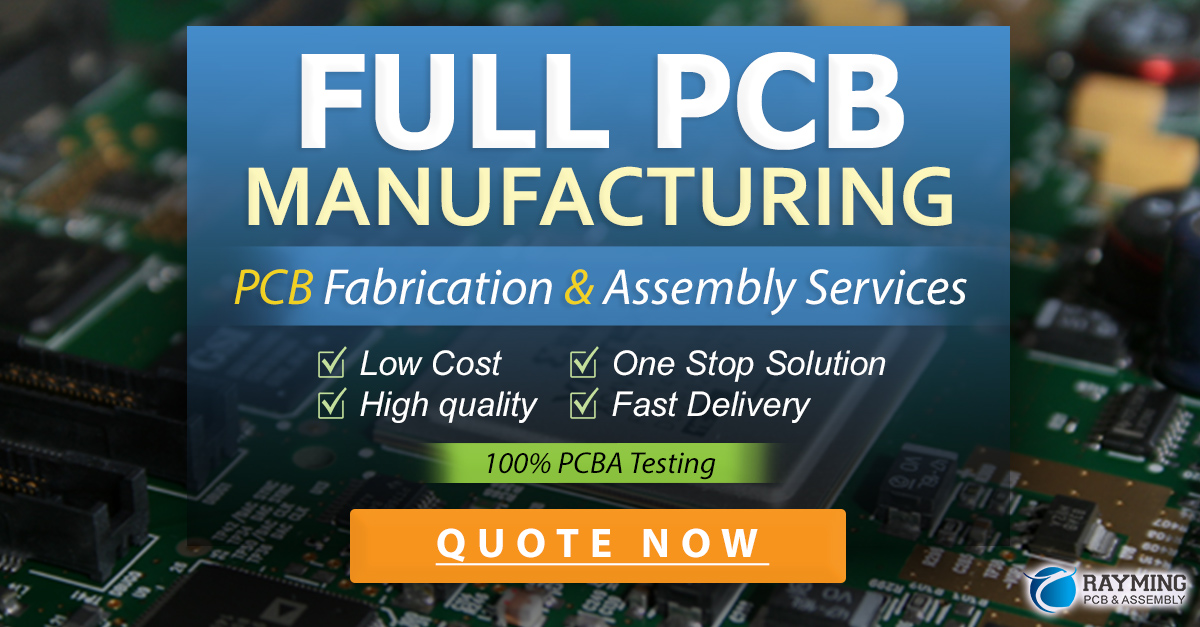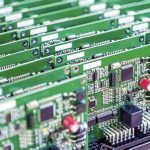Understanding the Importance of PCB Optimization
PCB optimization is the process of refining and improving the design of a PCB to achieve the best possible performance while minimizing costs and potential issues. By optimizing the PCB design, engineers can:
- Enhance the overall functionality and reliability of the device
- Reduce manufacturing costs and time-to-market
- Minimize signal integrity issues and electromagnetic interference (EMI)
- Improve thermal management and power distribution
- Ensure compliance with industry standards and regulations
The PCB Design Flow: A Step-by-Step Approach
To achieve an optimum PCB design, it is essential to follow a structured and systematic approach. The PCB design flow typically consists of the following steps:
- Schematic Design
- Component Placement
- Routing
- Design Rule Check (DRC)
- Gerber File Generation
- Prototyping and Testing
- Manufacturing
Let’s delve into each step in more detail.
Step 1: Schematic Design
The schematic design is the first and most crucial step in the PCB design process. It involves creating a graphical representation of the circuit, which includes all the components and their interconnections. Here are some key considerations for optimizing the schematic design:
- Use a hierarchical design approach to break down complex circuits into smaller, manageable subsystems
- Ensure proper component selection based on functionality, cost, and availability
- Implement appropriate power supply decoupling and filtering
- Include test points and debugging features for easier troubleshooting
- Adhere to industry standards and guidelines for schematic symbols and naming conventions
Step 2: Component Placement
Once the schematic design is complete, the next step is to place the components on the PCB layout. Proper component placement is crucial for optimizing signal integrity, thermal management, and manufacturability. Consider the following factors when placing components:
- Group related components together to minimize signal path lengths and reduce crosstalk
- Place sensitive components away from sources of EMI, such as power supplies and high-speed digital circuits
- Ensure adequate spacing between components for proper heat dissipation and ease of assembly
- Consider the mechanical constraints of the enclosure and connector locations
- Use a modular approach to facilitate future upgrades and modifications
Step 3: Routing
Routing involves creating the copper traces that connect the components on the PCB. Optimal routing is essential for maintaining signal integrity, minimizing crosstalk, and ensuring manufacturability. Keep these guidelines in mind when routing your PCB:
- Use appropriate trace widths and spacing based on the current carrying capacity and signal speed
- Minimize the use of vias, especially on high-speed signals, to reduce signal reflections and impedance discontinuities
- Implement proper grounding techniques, such as ground planes and star grounding, to minimize ground loops and EMI
- Route critical signals, such as clocks and high-speed data lines, first and with the highest priority
- Follow the manufacturer’s guidelines for trace impedance and length matching
Step 4: Design Rule Check (DRC)
Before proceeding to the next step, it is crucial to perform a Design Rule Check (DRC) to ensure that the PCB layout adheres to the specified design rules. DRC helps identify and resolve issues related to:
- Minimum trace width and spacing
- Drill hole sizes and pad dimensions
- Solder mask and silkscreen clearances
- Copper pour and thermal relief settings
- Manufacturing constraints, such as minimum feature sizes and Annular Rings
Running a comprehensive DRC helps prevent costly manufacturing issues and ensures the reliability of the final product.
Step 5: Gerber File Generation
Once the PCB layout passes the DRC, the next step is to generate the Gerber files. Gerber files are industry-standard files that contain all the necessary information for manufacturing the PCB, including:
- Copper layers
- Solder mask and silkscreen
- Drill holes and slot data
- Fabrication notes and assembly instructions
It is essential to review the Gerber files thoroughly before sending them to the manufacturer to ensure accuracy and completeness.
Step 6: Prototyping and Testing
Before mass production, it is highly recommended to create a prototype of the PCB and perform thorough testing. Prototyping allows you to:
- Verify the functionality and performance of the design
- Identify and resolve any issues that may have been overlooked during the design phase
- Validate the manufacturing process and assembly instructions
- Obtain user feedback and make necessary adjustments
Testing should cover various aspects, such as power consumption, signal integrity, EMI, and environmental factors (e.g., temperature, humidity, and vibration).
Step 7: Manufacturing
Once the prototype has been successfully tested and any necessary modifications have been made, the PCB design is ready for mass production. When selecting a PCB Manufacturer, consider factors such as:
- Manufacturing capabilities and limitations
- Quality control processes and certifications
- Lead times and pricing
- Customer support and communication
Providing clear and comprehensive manufacturing files, along with open communication, can help ensure a smooth and successful production process.
PCB Optimization Techniques
In addition to following the optimum PCB design flow, there are several techniques that can further enhance the performance and reliability of your PCB. Some of these techniques include:
1. High-Speed Design Considerations
When designing high-speed PCBs, it is crucial to consider factors such as:
- Impedance matching and controlled impedance routing
- Differential pair routing and termination
- Signal rise time and propagation delay
- Crosstalk and EMI reduction techniques
By addressing these factors early in the design process, you can minimize signal integrity issues and ensure optimal performance.
2. Thermal Management
Proper thermal management is essential for maintaining the reliability and longevity of your PCB. Consider the following techniques for optimizing thermal performance:
- Use thermal vias and copper pours to dissipate heat from high-power components
- Implement thermal isolation techniques, such as split planes and thermal reliefs
- Select components with appropriate power ratings and temperature specifications
- Use thermal simulation tools to identify and resolve hot spots
3. Power Integrity
Maintaining power integrity is crucial for ensuring the stable operation of your PCB. Some techniques for optimizing power integrity include:
- Implementing proper power supply decoupling and filtering
- Using separate power and ground planes for analog and digital circuits
- Minimizing the loop area of power and ground connections
- Utilizing power integrity simulation tools to identify and resolve issues
4. Design for Manufacturing (DFM)
Designing your PCB with manufacturability in mind can help reduce costs and improve the reliability of the final product. Some DFM considerations include:
- Adhering to the manufacturer’s design rules and guidelines
- Using standard component sizes and footprints
- Avoiding tight tolerances and small feature sizes whenever possible
- Implementing proper Fiducial Markers and assembly instructions
By incorporating DFM principles into your PCB design process, you can streamline the manufacturing process and minimize potential issues.

PCB Optimization Tools and Software
To aid in the PCB optimization process, there are various tools and software available that can help designers analyze, simulate, and optimize their designs. Some popular PCB optimization tools include:
| Tool | Description |
|---|---|
| Altium Designer | A comprehensive PCB design software with advanced optimization features |
| Cadence Allegro | A powerful PCB design platform with built-in signal and power integrity tools |
| Mentor Graphics PADS | A PCB design software with a focus on design for manufacturing (DFM) |
| Zuken CR-8000 | A PCB design solution with strong 3D modeling and simulation capabilities |
In addition to these commercial tools, there are also open-source alternatives, such as KiCad and gEDA, which offer a range of PCB design and optimization features.
Frequently Asked Questions (FAQ)
- What is the most critical step in the PCB design flow for achieving optimal performance?
The most critical step in the PCB design flow for achieving optimal performance is the schematic design. A well-designed schematic lays the foundation for a successful PCB layout and helps minimize potential issues down the line.
- How can I ensure signal integrity in my high-speed PCB design?
To ensure signal integrity in high-speed PCB designs, consider the following techniques:
– Use controlled impedance routing and impedance matching
– Implement proper termination and differential pair routing
– Minimize crosstalk and EMI through proper spacing and shielding
– Perform signal integrity simulations to identify and resolve issues
- What are some common mistakes to avoid when placing components on a PCB?
Some common mistakes to avoid when placing components on a PCB include:
– Placing components too close together, leading to thermal and assembly issues
– Failing to consider the mechanical constraints of the enclosure and connectors
– Placing sensitive components near sources of EMI, such as power supplies and high-speed digital circuits
– Neglecting to use a modular approach for future upgrades and modifications
- How can I optimize my PCB design for manufacturing?
To optimize your PCB design for manufacturing, consider the following tips:
– Adhere to the manufacturer’s design rules and guidelines
– Use standard component sizes and footprints whenever possible
– Avoid tight tolerances and small feature sizes that may increase manufacturing costs
– Implement proper fiducial markers and assembly instructions to aid in the manufacturing process
- What are the benefits of using PCB optimization tools and software?
Using PCB optimization tools and software can provide several benefits, such as:
– Automating the analysis and optimization of PCB layouts
– Identifying potential issues related to signal integrity, power integrity, and thermal management
– Reducing the time and effort required for manual optimization tasks
– Enabling designers to explore and compare different design alternatives quickly
By leveraging these tools and techniques, PCB designers can create more efficient, reliable, and cost-effective designs.
Conclusion
Optimizing the PCB design process is essential for creating high-performance, reliable, and cost-effective electronic devices. By following a structured PCB design flow, implementing optimization techniques, and leveraging the right tools and software, designers can streamline the development process and minimize potential issues.
Remember to focus on key aspects such as schematic design, component placement, routing, DRC, and manufacturing considerations to achieve the best possible results. Continuously staying updated with the latest industry trends, standards, and best practices will also help you stay ahead of the curve in the ever-evolving world of PCB design.
By adopting an optimum PCB design flow and incorporating the techniques and tips discussed in this article, you can create PCBs that not only meet but exceed the performance and reliability requirements of your projects.






Leave a Reply